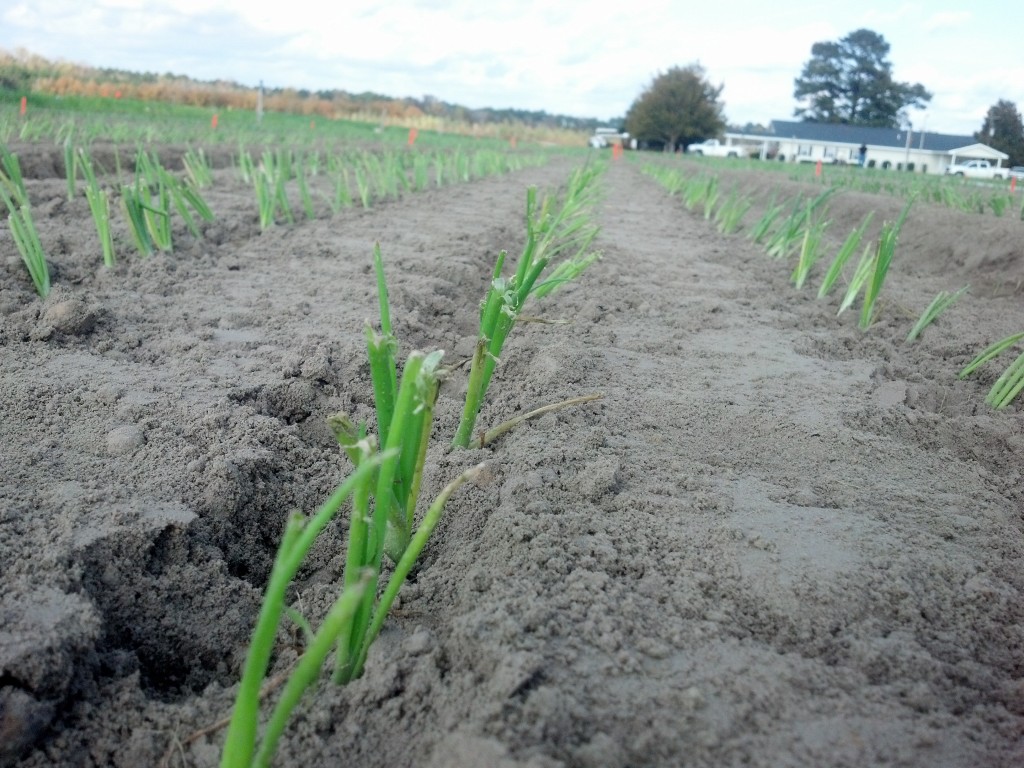As of August 15, 2025, the two-spot cotton leafhopper, more commonly known as the cotton jassid (Amrasca biguttula biguttula), has been confirmed in Tattnall County, Georgia. This invasive pest, native to the Indian subcontinent and other parts of Asia, has only recently been detected in the United States. It was first found in Puerto Rico in 2023, followed by Florida in 2024, and confirmed in Georgia on July 9, 2025. As of mid-August, cotton jassid has been detected in at least 12 South Georgia counties.
Several of the first detections in Georgia came from okra plants, which appear to be a preferred host for the pest. However, cotton jassid has also been confirmed in cotton fields, and in other parts of the world is considered an economic pest of multiple crops. In addition to cotton and okra, hosts include corn, soybean, peanut, sunflower, eggplant, potato, and pea. Its ability to feed on a wide range of plants increases the potential risk to Georgia agriculture.
Cotton jassids are small—about one-tenth of an inch long—and are easily recognized in their adult stage by two distinct black spots on their wings. Females insert eggs into tender plant tissues such as petioles, twigs, succulent leaves, or into the spongy layer of leaf tissue between the vascular bundles and epidermis. Eggs hatch in three to four days, and the nymphs pass through five growth stages over the course of eight to eleven days. Adults live two to four or more weeks, and a full generation can be completed in about two weeks, allowing populations to increase rapidly under favorable conditions.
Feeding damage occurs when the insects feed on the underside of leaves and introduce salivary toxins into plant tissue. This causes yellowing, reddening, and browning of foliage, a symptom known as “hopperburn,” which can lead to the complete desiccation of plants if left unchecked. Other visible symptoms include leaf puckering and crinkling. In the field, damage is often more severe on end plants, along field edges, and in gaps or skips within the stand. Importantly, hopperburn symptoms can resemble potassium deficiency in cotton, which makes careful scouting and correct identification essential to avoid misdiagnosis.



Scouting should be done at least 8–10 rows from field edges. To check for infestations, turn over an expanded main stem leaf from one of the top five nodes and look for immatures on the underside. The preliminary treatment threshold is three nymphs per leaf in the top six inches of the plant, combined with visible injury symptoms. Nymphs can sometimes be mistaken for aphids, so correct identification is essential. Early insecticide trials in Georgia suggest that pyrethroids such as bifenthrin alone do not provide acceptable control.
Because the cotton jassid is new to Georgia, management recommendations are still being refined. Growers are encouraged to scout fields regularly, watch for unusual patterns of leaf yellowing or puckering, and report any suspected infestations to their local UGA Cooperative Extension office. Be prepared for updates as research continues on control options for this pest. For additional background on the cotton jassid, see the Florida Department of Agriculture and Consumer Services Pest Alert at: Two-Spot Cotton Leafhopper Pest Alert (FDACS).
For additional information or to report observations of cotton jassid, contact your county Extension office.
